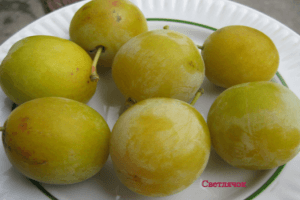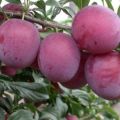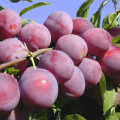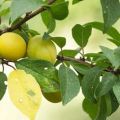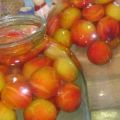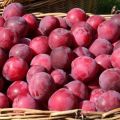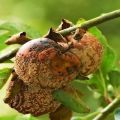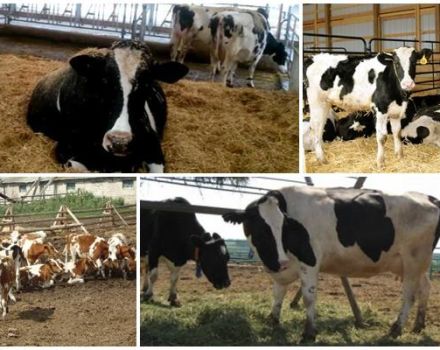Description and characteristics of the cherry plum variety Soneyka, planting and care rules
Cherry plum Soneyka, bred by breeders of Belarus, is very popular. It is actively cultivated throughout Russia and Belarus. The variety takes root at low temperatures and is drought-resistant. Soneyka plum loves fertile soils, which must be prepared in advance. Fruits are sweet and sour, dense, juicy. The tree gives a great harvest.
Soneika plum breeding history
The variety was bred by breeders of Belarus. The work took place at the Institute of Fruit Growing. The variety was bred by pollination of Mara cherry plum with the pollen of diploid plums. The results were crowned with success. The main work was carried out by Doctor of Agricultural Sciences Valery Matveev. Soneika began to cultivate cherry plum variety in 2009.
Characteristics and description of the variety
Many gardeners choose the Soneyka variety due to its resistance to disease, frost and drought. Cherry plum produces many fruits that are well stored and do not suffer during transportation.
Tree options
Soneika cherry plum tree is not tall, branches are distributed in the form of an oval. The maximum height is 3 meters. The branches hang down and grow densely. Leaves are green, oval with elongated ends. Inflorescences are white. The fruit weighs on average 38 grams, the peel is dense, has a slight pink tint. Cherry plum pulp is dense, juicy, sweet and sour in taste.
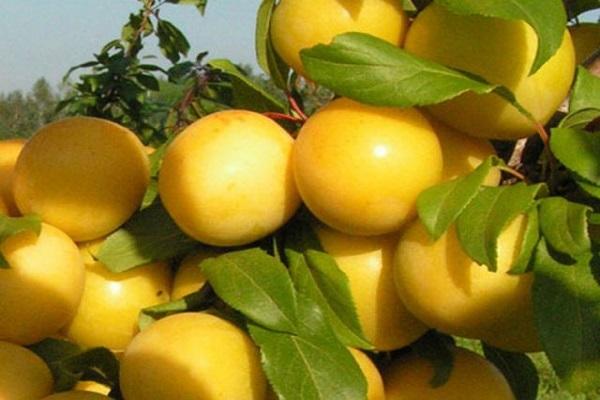
Resistant to low temperatures and drought
The tree is able to withstand low temperatures down to -30 ° C. It takes root well in the northern parts of the country. It tolerates frost without loss. During the period of bud formation, a sharp temperature drop, especially at night, contributes to the death of the primordia.
It tolerates drought well. It has powerful roots that help the drain to feed moisture from the deep layers of the soil. A good watering regime will bear more fruit.
Susceptibility to diseases and parasites
Plum Soneika is immunized to clotterosporia and other diseases. She rarely gets sick, her immune system is well developed. The main pests are aphids and seedlings. Aphids eat up the leaves, they begin to turn yellow, dry and fall off. Insects are localized on the lower side of the leaf, small, black.
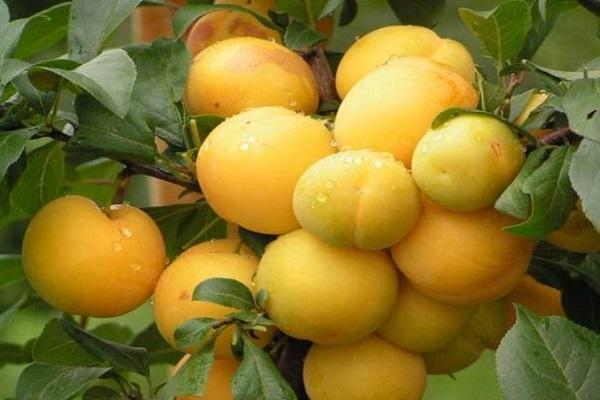
The seed eater penetrates the fruit bone and eats it from the inside.Fruits become dull and begin to fall off. To prevent these diseases, it is recommended to carry out preventive spraying.
Pollination and flowering
A nearby pollinator is needed to set fruit. Eastern European plum varieties are suitable for this. The varieties Altayskaya Yubileynaya plum and Alyonushka plum are planted. Their flowering is the same.
Important! The flowering of the pollinator must coincide with the flowering of the cherry plum Soneyka.
In early May, buds are formed. By the end of May, white flowers bloom, 5 flowers in one inflorescence. Each of them consists of 5 petals. After flowering is complete, fruits are tied, which ripen by the end of August or the beginning of September.
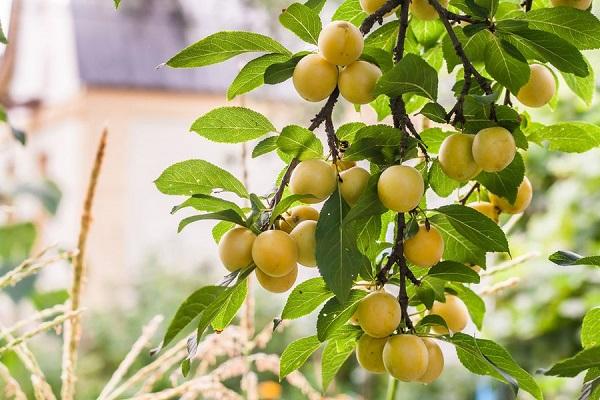
Productivity and fruiting
High-yielding variety. For one season cherry plum gives about 40 kilograms of fruits from one tree. The first fruits of cherry plum give 2 years after transfer to the ground. Fruits ripen almost simultaneously, which makes harvesting easier. They have a dense stalk, due to which the fall of berries is minimal. They have a pleasant sweet and sour taste.
Where are the fruits used?
Soneika plum is widely used in cooking and cosmetology. The fruits are consumed fresh, and also compotes, preserves, jams are prepared from them. In cosmetology, cherry plum extract is used in the manufacture of shampoos, creams, scrubs, balms.
Since the fruit is well stored, it is convenient to transport and sell them. The term of consumption is long, it is stored for about 30-40 days.

Advantages and disadvantages
This variety has its positive and negative sides. The pluses include:
- winter hardiness;
- drought tolerance;
- strong immunity;
- small size of the plant;
- good harvest.
The disadvantages include the need for a pollinator for fruiting, as well as supporting sticks for branches during the ripening period. There are many fruits on one branch, because of this there is a risk that the branch will break off, part of the harvest will be lost.
Features of planting culture
Soneika has its own characteristics of transferring to the ground. It is important to choose the right place for the plum, so that it feels comfortable and fructifies better.
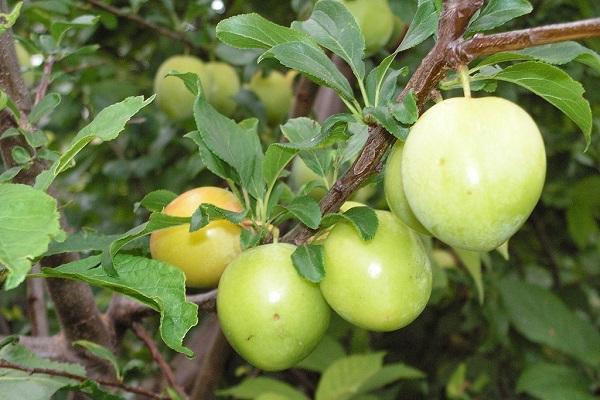
Recommended timing
In autumn, the selected area is dug up, stones and weeds are removed. The landing site begins to be prepared from March. Dig a hole in the form of a square 60 by 70 centimeters. All weeds are removed next to it. Drainage is installed in the hole and organic fertilizers are added. A month later, a seedling is planted.
Choosing the right place
The place for the tree should be well lit. It is not recommended to plant cherry plum near awnings and tall plants that will shade it. Plum loves fertile soil.
Important! It is necessary to select a place where the roots will not be flooded with water, this reduces the immunity of the tree, it bears less fruit.
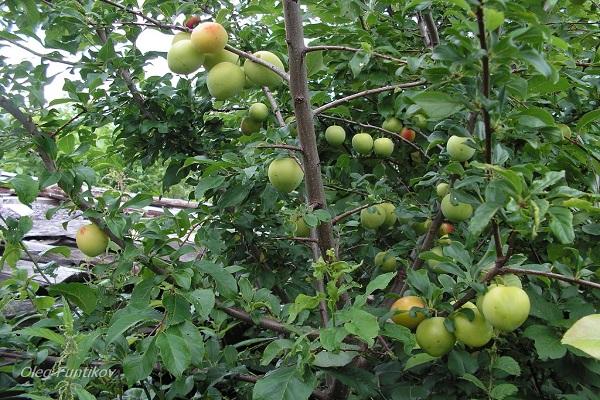
What crops can and cannot be planted next to cherry plum
The following crops are well compatible with cherry plum:
- raspberry;
- currant;
- gooseberry;
- Apple tree;
- pollinating trees.
Near cherries, cherries or pears, plums bear fruit worse, such crops are recommended to be planted at a distant distance from each other.
Seat selection and preparation
For planting, choose young trees with dense roots, without the presence of rot. The branches are strong, straight, if there are cut ones, then it is better not to take such a tree. There is a possibility that it was damaged. They buy two-year-old seedlings to get the harvest immediately.
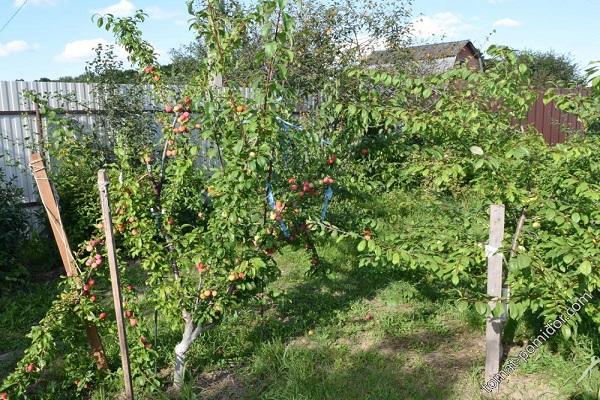
A planting site with good illumination, next to the pollinator and a good outflow of excess water is the best for the Soneyka cherry plum. It is prepared in the fall. They dig up the entire area, select weeds and stones. Fertilized with organic compounds. In March, a hole is prepared for landing.
Landing technology
The drainage system prepared since March is sprinkled with a layer of soil. 5 liters of warm water with mineral fertilizers are poured into the pit.A support stick is installed to protect the young plant from strong winds. Then the seedling is transferred to the ground.
The roots must be carefully spread out. They don't cleanse the earth. Sprinkle on top with soil in layers, tamping each one with your hands so that no space with air is formed. Pour warm water again.
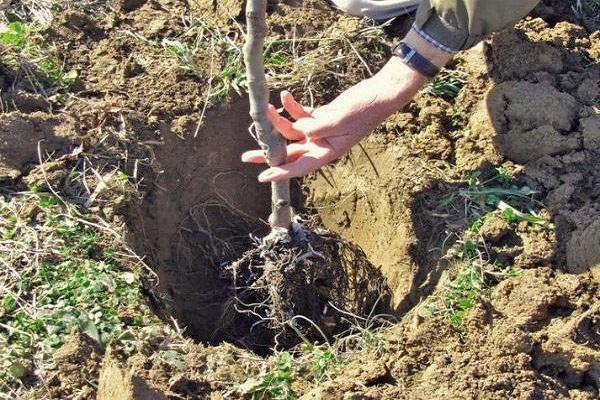
Follow-up tree care
Like any plant, Soneika cherry plum requires compliance with certain rules for caring for it. If you observe watering, circumcision, prevention of diseases, take care of transferring cold months, then the plum will delight you with a large harvest.
Watering and feeding
While the plum is young, it should be watered more often. Irrigate 2 times a week for 1 bucket of water. In the dry period, watering is increased to 1.5-2 buckets a day, 3 times a week.
Important! It is impossible to transfuse the plant, this causes decay of the roots and reduces immunity. Cherry plum may die.
Top dressing is done three times a year. In early spring, mid-summer, late summer. Humus is used for these purposes. Sonya loves phosphorus and potash fertilizers.
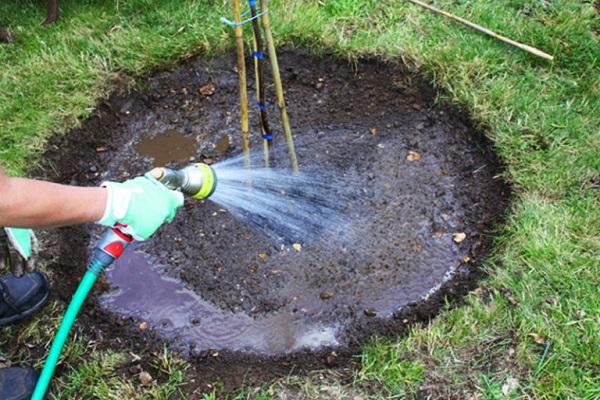
Crown formation
Pruning is done 2 times a year. All dried and damaged branches are cut off. Since the crown of the plant is dense, it is necessary to thin out after harvest, so that next year the fruits are of better quality and do not interfere with each other's development.
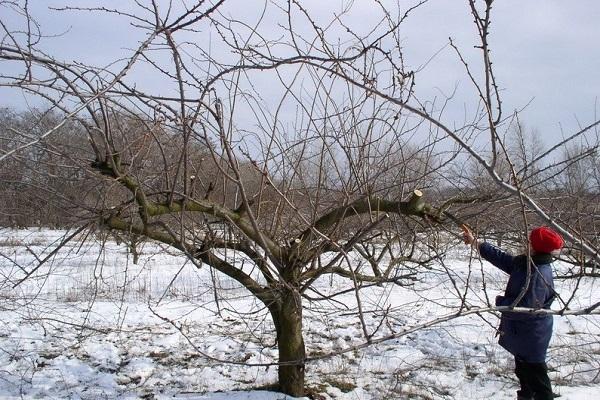
Leaving and loosening the trunk circle
To preserve water near the roots of the tree, the trunk circle is mulched. Use organic materials, cover with a layer of 7-10 centimeters. Loosening of the soil is carried out regularly, depending on the appearance of weeds near the plant. All weeds are removed. The soil is loosened for improved aeration of the roots.
Preparing the tree for wintering
The tree tolerates low temperatures well. However, young trees are recommended to be insulated for the winter. To do this, cover the trunk circle with a warm cloth or moss. This will help keep the roots warm. The older the tree, the stronger the frost resistance is. You shouldn't risk it until the plant has matured.
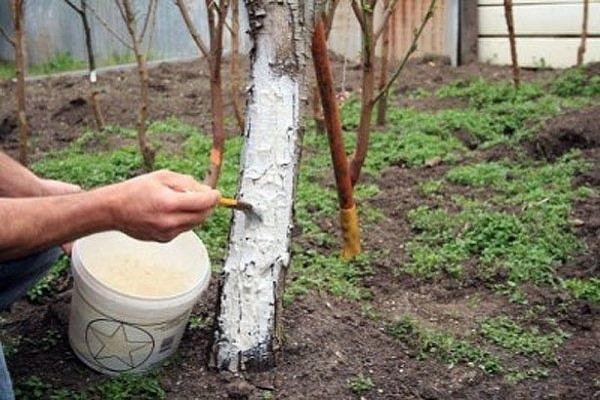
Diseases and pests: methods of control and prevention
For spraying, a urea solution is prepared. 700 grams of powder is diluted in a bucket of water and sprayed on the leaves of the trees in early spring, before bud formation begins. To prevent pest infestation, once a month special preparations are used: "Healthy Garden", "Aurum-S", "Iskra-Bio". The packaging contains a selection of instructions for use.
To strengthen the immune system, spraying with solutions of "Zircon" and "Ekoberin" is carried out. These drugs significantly reduce the risk of developing infectious diseases.
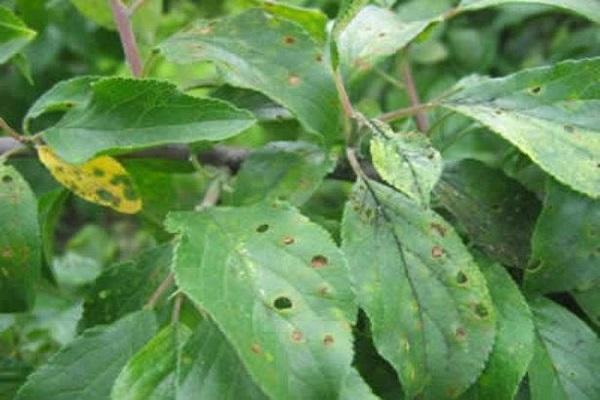
Reviews of gardeners about the Soneyka variety
Natalya 35 years old, Moscow: “I looked after Soneika for a long time, this year I bought it together with the pollinator. I planted them nearby. I took a biennial plant. It stuck well. I landed in April. At the end of the summer they tried her harvest. Fruits are stored for a long time, taste pleasant, dense. "
Vladimir, 43 years old, Kerch: “Soneika planted a plum in the garden 5 years ago. She never ceases to delight every year with her harvest. I bought her young. In the first year did not bear fruit, survived the winter well, but I covered her. A pollinator is growing nearby. In spring it blooms very beautifully, suitable for decorating the site.
Marina, 54 years old, Minsk: “Soneyka has heard about cherry plum for a long time, last year she decided to experiment. I bought a seedling, planted it according to all the rules. Unfortunately, for the winter, the young tree did not cover well, it froze a little. The next year I tried to restore it. It worked, but it took a lot of effort. I hope to get the first fruits this year ”.

